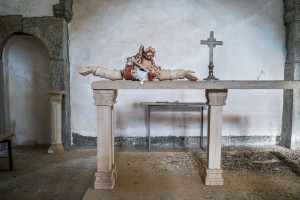Last month, the New York Times Magazine ran a feature by Elize Grizwold about the persecution and slaugher of Middle Eastern Christians. Of course the Christians they’re referring to are primarily not the Protestant sects or the Roman Catholic Church we’re familiar with the the United States but a variety of faiths that have existed since Late Antiquity including some with the classic Gnostic doctrines attacked by the church fathers like Hippolytus and Iranaeus:
“As Christianity grew, it coexisted alongside older traditions — Judaism, Zoroastrianism and the monotheism of the Druze, Yazidis and Mandeans [who believed that John The Baptist was the Messiah, not Jesus], among others — all of which survive in the region, though in vastly diminished form. From Greece to Egypt, this was the eastern half of Christendom, a fractious community divided by doctrinal differences that persist today: various Catholic churches (those who look to Rome for guidance, and those who don’t); the Eastern and Oriental Orthodox (those who believe Jesus has two natures, human and divine, and those who believe he was solely divine); and the Assyrian Church of the East, which is neither Catholic nor Orthodox.”
These are faiths interwined with groups like the Bogomils who are reputed to have brought their doctrines to France giving rise to Catharism.
All of this, then, could be of interest to those concerned with the antecedents to the Ecclesia Gnostica Catholica and their influence thereupon.
read the entire 7000 word piece here:


